What Is Bycatch?
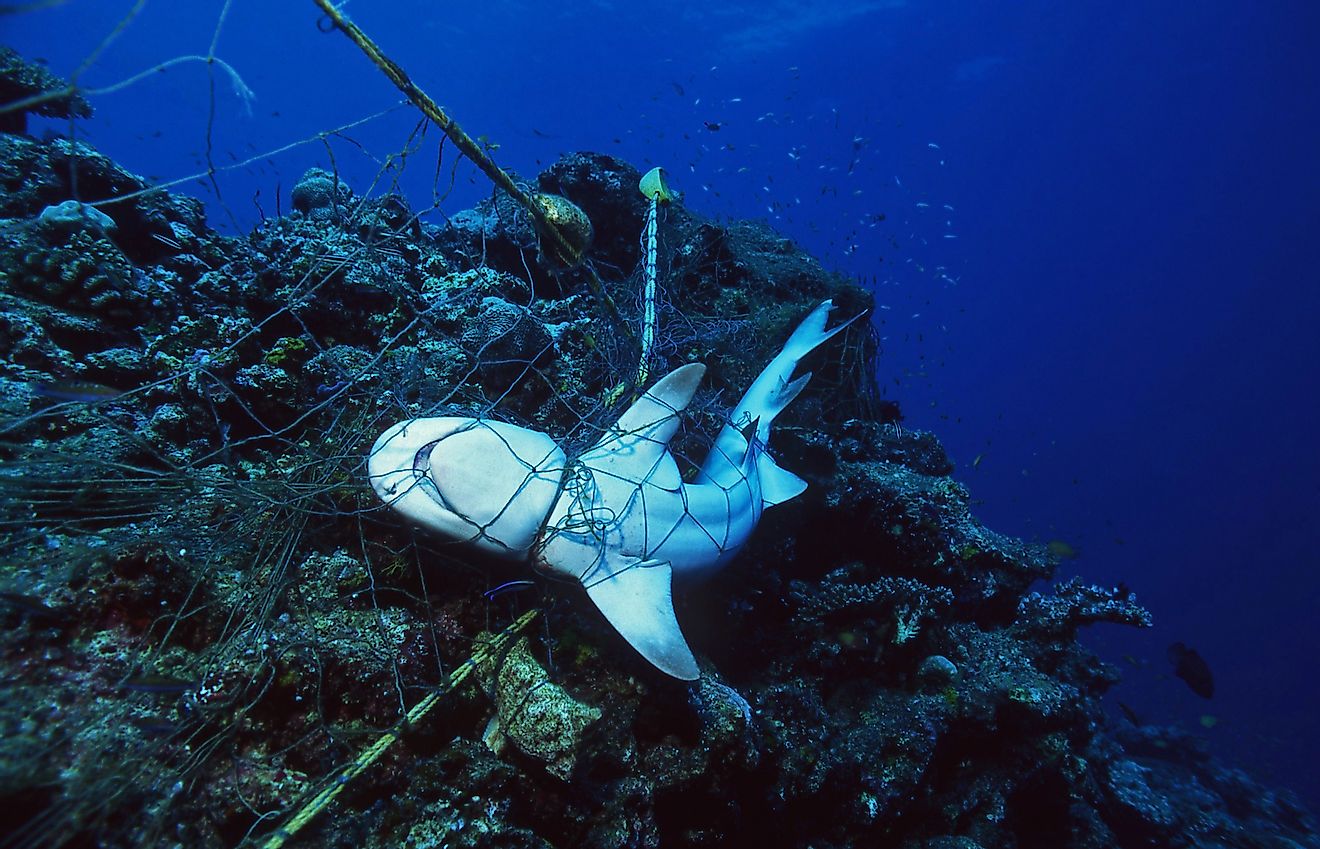
- Bycatch includes any marine life that is caught unintentionally as a result of fishing or netting.
- Bycatch is the leading cause of death to small whales, dolphins and other porpoises.
- The leading causes of bycatch are longlines, gill nets and trawl fishing.
Bycatch has become an increasingly prominent issue as the fishing industry has boomed with human population growth, as well as technological advances. Many fishing, if not all methods incur bycatch, and larger scale fishing is the leading cause of marine species endangerment and death worldwide.
What Is Bycatch?
Bycatch is a direct result and product of the fishing industry. Found essentially everywhere there is fishing, it is the incidental catching of unintended marine wildlife. In other words, it is any fish, shark, bird, dolphin or other creature that is caught unintentionally in the process of targeted fishing.
The Fishing Industry And Bycatch
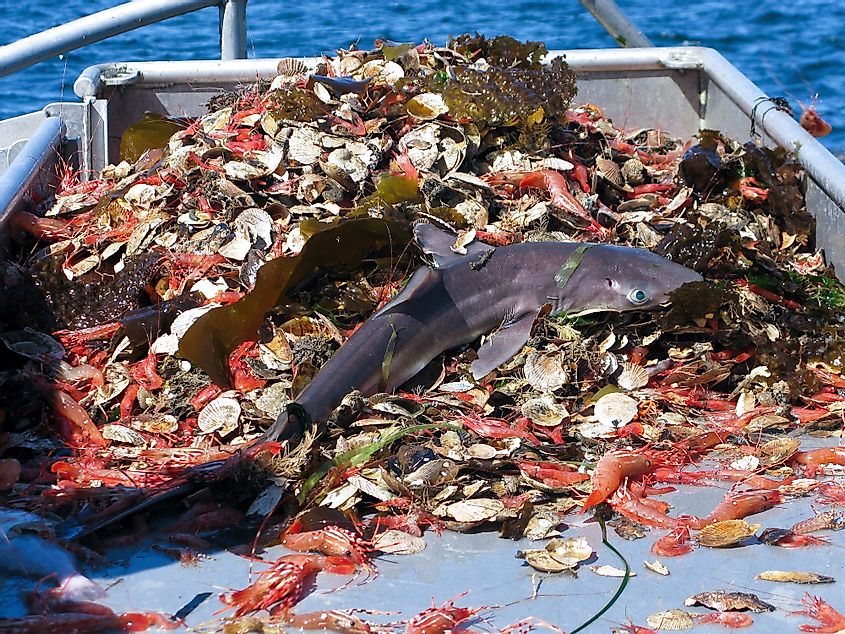
Modern fishing technologies have improved the fishing industry greatly, but at a direct cost to other marine life. Large scale fishing boats, catchment nets, and the like, have caused bycatch to increase exponentially. There are thousands of miles of nets and fishing line in the Earth’s seas every day, and they do not discern between the intended prey and innocent bycatch species.
Additionally, because of the nature of these large scale nets and boats, most bycatch does not survive this process, and is simply thrown back into the sea, dead. Not only has industrialized fishing taken a toll on the targeted species, such as cod, tuna and other highly desired fish species, but other animals which are most often caught in bycatch are feeling the negative impact of large scale fishing as well.
While awareness of this issue has increased in recent years, it is still a very real and ongoing issue. Modified fishing gear and changes in former fishing practices can help, but major changes need to occur if the problem is to be curbed.
What Causes Bycatch?
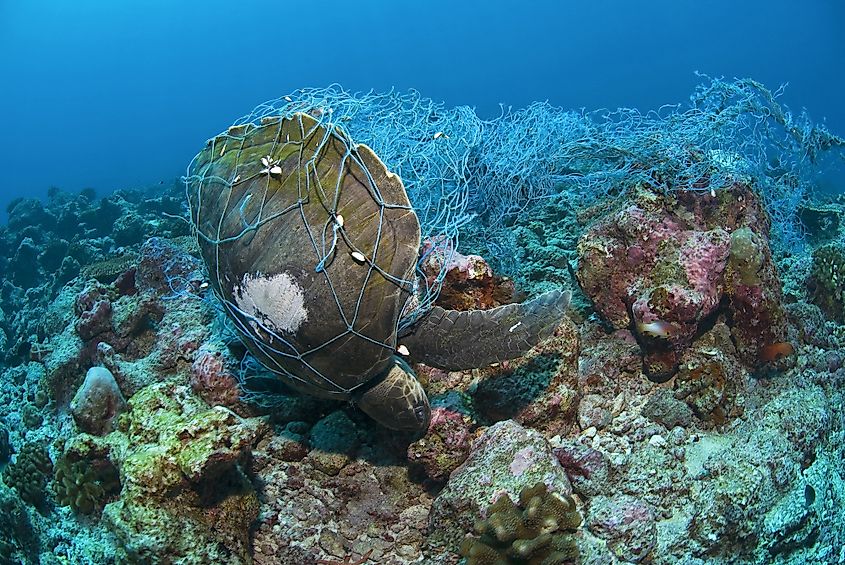
Sometimes, advanced technologies can do just as much harm as good. Modern fishing gear is extremely effective, and has been developed in such a way as to cover huge distances in short amounts of time. While this makes it very efficient in terms of the fishing industry, it also means that there is little discernment in what is caught. These large scale nets and fishing lines will catch anything in their path, whether it is the intended fish for market, or an unsuspecting dolphin that happens to be in its path.
In some areas, and certain countries, regulations on these types of fishing techniques are very lax or nonexistent, meaning the harmful techniques are allowed to continue unchecked. In other cases, pirate fishing simply goes against what rules and regulations are in place, disregarding structures intended to curb bycatch and overfishing.There are several specific types of fishing gear and fishing techniques which are more harmful in terms of bycatch. The gear itself plays a huge part in terms of what is caught, and how much bycatch any given fisher will snare. The most common causes of bycatch are gillnets, trawling, and longlines, all of which are extremely non discerning in terms of what they catch.
Longlines
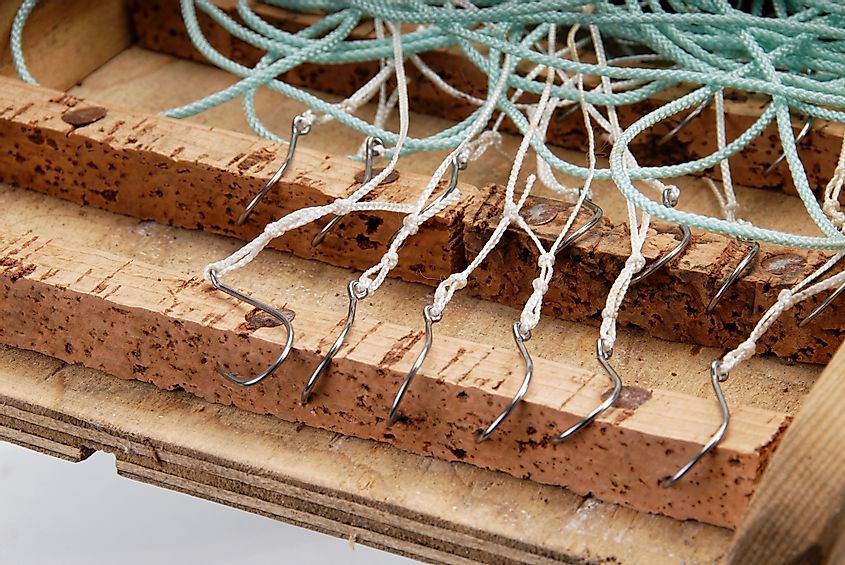
Longlines are used to catch large-size commercial fish such as tuna, swordfish and halibut. A longline, as the name suggests, is an extremely long single line along which thousands of large hooks are fixed. The hooks are baited, in order to lure the desired target fish, however there is no way of stopping other fish and marine life from getting caught on these hooks as well. Longlines are the most harmful to sharks, younger tuna not large enough to be the intended target, and turtles. Not only can being snared trap an animal, leading to its eventual death, but those that do not remain snagged can suffer complications or eventual death due to ingesting these large J hooks.
Trawling
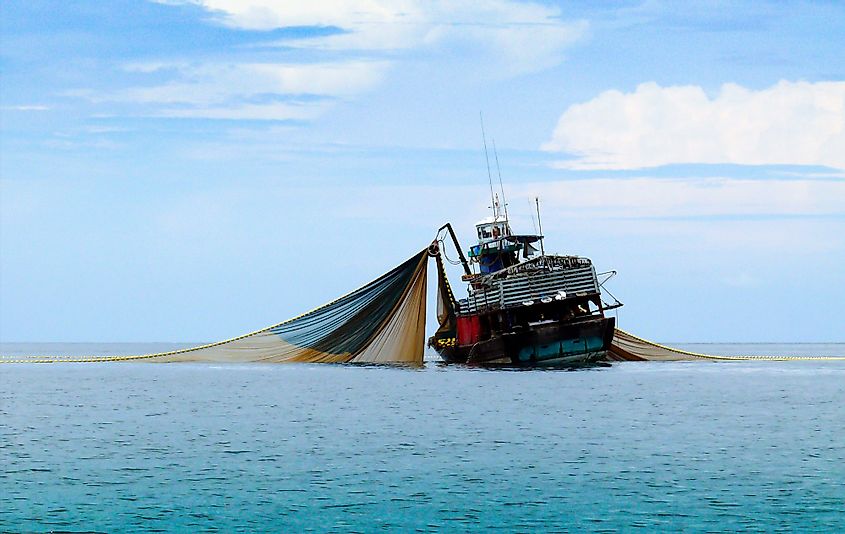
Trawling is another problematic fishing technique which results in a large number of bycatch casualties. Trawling is the process of dragging widespread nets through the water. There are different depths of trawling, from midwater trawling, which is essentially through open ocean at a medium depth, or deep trawling, which allows the nets to drag along a seabed. This process, like so many large scale fishing techniques, is highly efficient but not at all selective. Nets scoop up everything in their path, from unsuspecting non target fish, marine life, and sea turtles, to plants an debris on the sea floor. In areas where size restrictions exist on a given species - for example a mature tuna is allowed to be fished, but juveniles are restricted - trawling cannot discern between fish sizes, and all sea life in the nets path become trapped. Trawling has a huge amount of bycatch, as nearly everything in the path of the net is swept up unsuspectingly, and nearly always killed during the entrapment. Hundreds of tons of bycatch are discarded back into the sea in this way.Additionally, trawling - specifically deep trawling - can be destructive to the seabeds. In more shallow areas, trawling nets have been known to cause extensive damage to coral reefs and ocean beds. Additionally, this fishing process removes seaweed and other plant life that are essential to the stability of underwater ecosystems.
Gillnets
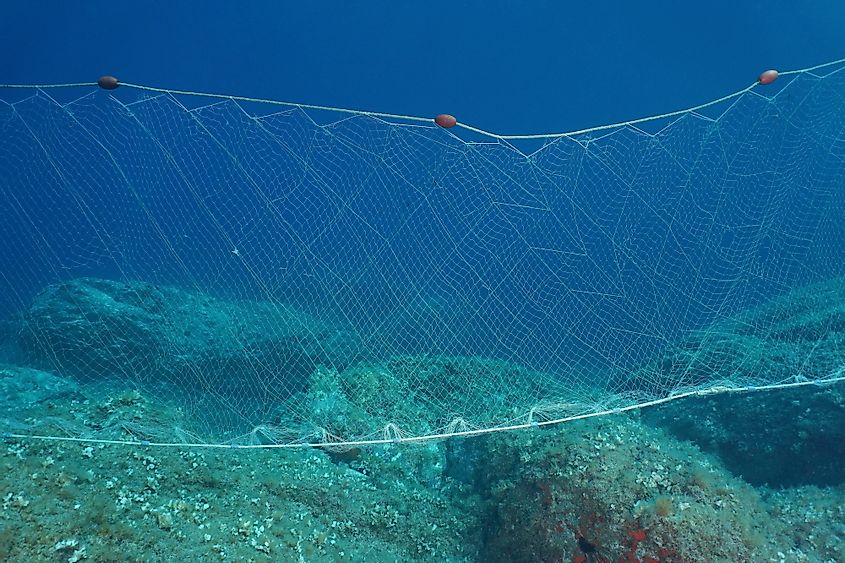
Gillnets are a specific type of mesh netting used for industrial and commercial fishing. As the name indicates, the nets are created in such a way that they snag a fish by their gills. Fish swim into the nets, where their heads pass through the mesh openings, but they are then caught around the gills, preventing them from escaping back out. These nets are massive in size, extending for miles and reaching as far as 100 feet in depth. Again, this process creates a large amount of bycatch. Anything that is larger in size than the net’s mesh can easily become trapped within the gillnet. The nets are also made to be virtually invisible underwater, and due to their thin mesh structure, are not recognized by animals that use echolocation. In this way, they are especially dangerous to larger (and less abundant) marine species, such as dolphins, whales, sharks, turtles and even seabirds. In some cases, gillnets can even be lost or forgotten, and remain in the ocean to trap unsuspecting creatures. In cases where these nets are lost, they become unattended death traps that catch any animals unfortunate enough to come across them.
Environmental Impact
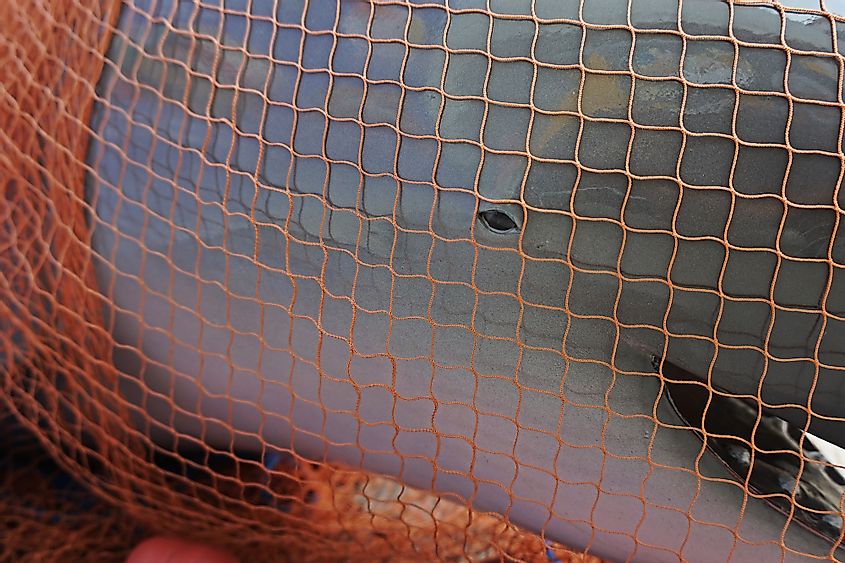
Bycatch has had an extreme and direct impact on a variety of marine species. Roughly 300,000 whales, porpoises and dolphins die each year as a result of these fishing techniques. This means fishing is the leading cause of cetacean death. Similarly, a number of turtle species have become threatened, endangered or even gone extinct, due in large part to bycatch. Threatened species around the world are dying at alarming rates due to these reckless fishing techniques, and continued pirate fishing. While regulations have been set in place in many areas, with regards to things such as quotas, fish sizes or age, fishable areas, net mesh size and outlawing of certain practices, bycatch is still a very real problem in the Earth’s seas and oceans.
Reducing Bycatch
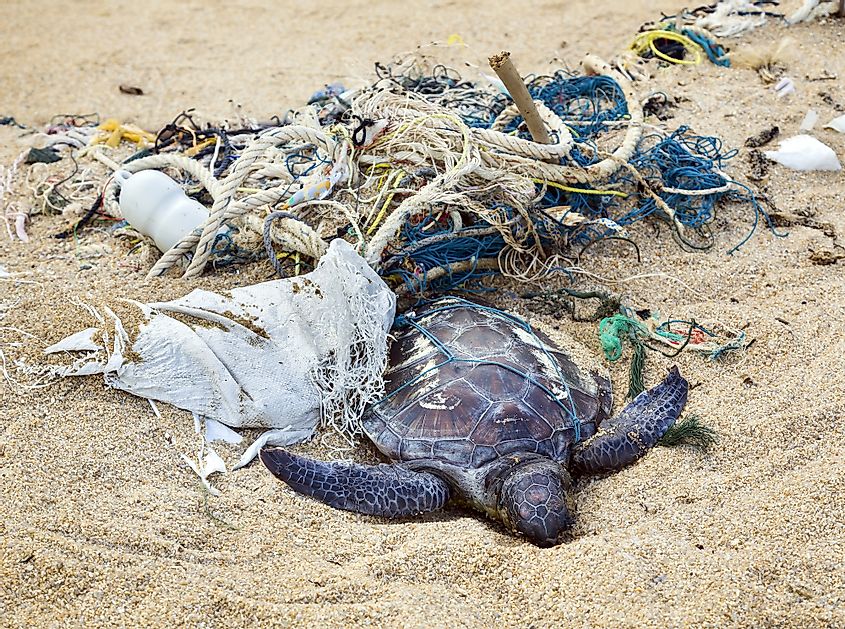
Dead turtle entangled in a fishing.
Changing out fishing gear for safer, more selective alternatives, and enforcing stricter quotas has been proven to help reduce the negative impacts of commercial fishing. One example is that of swapping J hooks - the traditional hook type used in longline fishing - for a rounded hook. This has been proven to reduce turtle catchment, as well as prevent death in turtles which swallow the hooks, but has not reduced the targeted fish catchment. Similarly, research has been done into the best ways to target certain species, while preventing non-target fish and marine life from being unintentionally snagged.
In New England, haddock populations have been on the rise, while cod and other species are still very much endangered. By studying the movement of both species when approached by nets, scientists were able to design an effective net which drew in haddock, but allowed cod to more easily escape unharmed. Advanced research and technologies such as this one are helping to reduce bycatch, and increase targeted fishing. This means that fisheries are still able to stay in business, while the negative impacts on the environment are being curbed.
By restricting and eliminating harmful fishing methods, as well as introducing safer and effective new technologies and practices, bycatch can be reduced, with the aim of preventing marine species endangerment and extinction. With time, policy and cooperation, bycatch can hopefully be a thing of the past.











